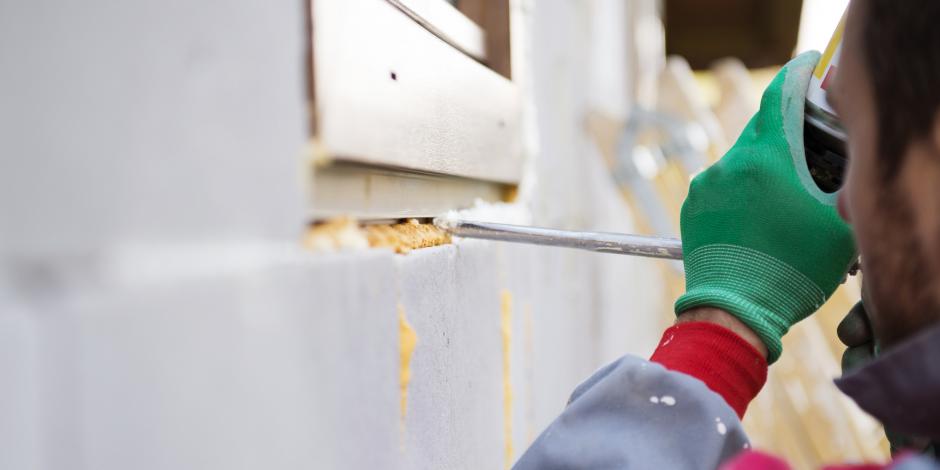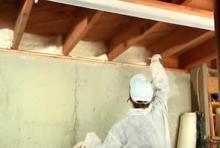
 Homes burn through a mortifying 21% of the energy used in the United States. A lot of that energy is spent heating and cooling your house. And even worse, a whole lot of that energy is spent heating and cooling your backyard and front porch, and maybe even your driveway, through leaks, holes, or uninsulated foundation walls in your building envelope.
Homes burn through a mortifying 21% of the energy used in the United States. A lot of that energy is spent heating and cooling your house. And even worse, a whole lot of that energy is spent heating and cooling your backyard and front porch, and maybe even your driveway, through leaks, holes, or uninsulated foundation walls in your building envelope.Although some of the air leaks in your home are visible to the untrained eye — around old and untreated doors and windows, for example — much of the average home's air leakage takes place in areas you don't see. A lot of it takes place because of something called the stack effect, or chimney effect, which works like this: During cold weather, warm air, being lighter, rises to infitrate the attic, creating negative pressure in your living space that causes cold air to be drawn up from the colder basement or cellar through leaks and cracks in the foundation and walls. This air movement is what is felt as cold drafts, in additon to whatever air infiltration may also be happening around windows and doors. Meantime, the warm air that has leaked out of your living space into the attic finds its way outside through vents (if it is a vented attic) or holes and insulation deficiencies (if it is unvented), and the stack effect cycle continues. Now your heating system has to turn on more often to heat the cooler air that is pulled in to replace the leaking warm air.
A Home Performance Contractor doing air sealing work in your home will generally focus on the basement and the attic in order to minimize this stack effect, and thus minimize unwanted air movement throughout your home. Air sealing is crucial for maximizing the performance of insulation, the other major component of your home's building envelope. The R-Value (a measure of resistance to heat loss) of insulation is determined under the assumption that there will be no air infiltration throughout the insulation — it assumes that there will be adequate air sealing around the insulation. Once insulation is left exposed to air movement (air moving up through your attic floor, for example), R-Value decreases. So you won't get the performance you expect from it.
Two additional major reasons besides energy efficiency make it important to prevent unwanted air movement in your house: One is that your basement or cellar (or attached garage) might not be the best place to obtain replacement air, since these locations often have air quality issues (rodent droppings, mold, storage of paints, paint thinners, and such), that can be the source of compromised air. The second reason is that moisture is carried all over the house by air movement, whether from a damp basement or an unvented bathroom, and where there's a source of moisture, mold will surely follow.
If you do some serious air sealing work, you can expect to net hundreds of dollars in annual energy savings. To boot, because the materials are relatively inexpensive, and because much of the most important work takes place in the attic and basement (where you don't have to worry about fancy trim or replacing drywall), the upfront cost is usually relatively low compared to other energy retrofits, like replacing windows. Besides the added comfort, there will be the added bonus of much improved air quality!
What is Home Performance?
When you buy a car, you expect good gas mileage with low upkeep, safe handling, and comfort inside. In other words, respectable performance. Why would you have any other expectations for a house? The ability of your home to deliver comfort, health, and affordability is what a Home Performance Assessment is all about. Is the home functioning at its optimum? Or are there deficiencies and inefficiencies? An assessment can often determine which cost effective items can improve the performance of your home most!
Check out the Home Performance Assessment page and its Learn page for the issues and how your home can be improved!
Are you new to Home Ownership?
Make sure you look at the suggestions on my Renovations page; more useful information on my Real Estate Pages; and an excellent read on the Building Science Corporation's website: The Building Science Guide to Home Ownership! See my LINKS page for more.
Of course, feel free to call (718.941.3725) or email me with questions and concerns!
Are you a builder or developer looking to meet new local energy codes or Energy Star?
As an independent third party, I can provide initial and test-out Blower Door and CAZ testing along with Infrared imagery to help make your project a success.
Contact me for more information.
